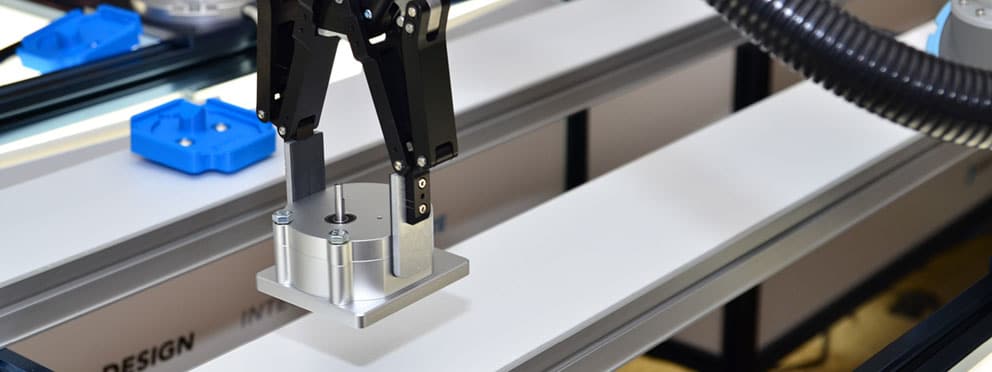

No matter the type of industrial robot you’re working with — SCARA, Delta, Artesian, Collaborative, etc. — conveyors are a necessary companion. They bring parts to the robot and take them away once the operation is complete. In many cases, robots pick and place parts from conveyors as they’re moving. Our Automation Series Conveyors were designed with robotic industry applications in mind. They are versatile and lightweight, with gearmotor packages that can be easily integrated with PLCs and robot control systems.
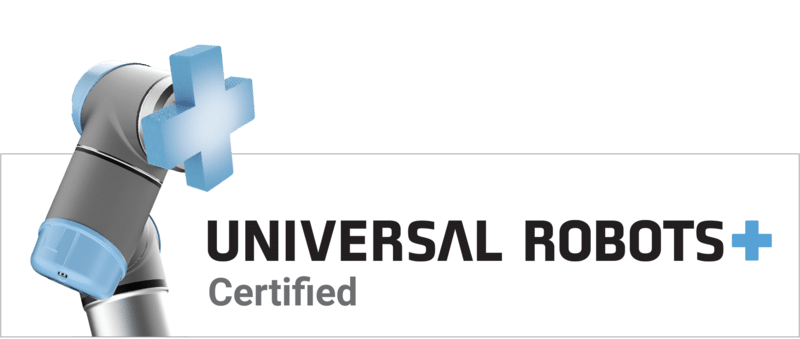
Design World Magazine recently highlighted an application that uses 28 of our AS40 conveyors to help reduce part handling at Byrne Electrical Specialists. The conveyors are in a set of three robotic assembly cells that assemble electrical outlets.
Nine of the conveyors (three per cell) have backlights installed in their frames, which provide contrast so the vision system can detect properly shaped/spaced parts and orient the robot for pickup. The conveyors stop when the vision system detects parts ready to be picked.
Each of those conveyors is fed from another set of conveyors that run parallel and slightly above the backlight conveyors. They run slower than the backlight conveyors to create separation between the parts. Parts that are stacked or improperly shaped drop onto a third set of conveyors that takes them back to a hopper so they can be run through the system again

Have you ever seen a hotel ballroom filled with robots, conveyors and engineers? We had the opportunity to experience it first hand earlier this week when Robotiq asked us to sponsor their second annual Robotiq User Conference in Quebec City. The conference included a challenge where eight teams of 12 engineers used their robots, conveyors, grippers, and sensors to build “pumps.” They had 24 hours to design their system, program the robots and crank out pumps.

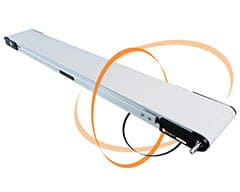
AS40 Conveyors are developed for flexibility. The Pivot Drive allows you to adjust the drive placement to meet the needs of changing conveyor applications. Tee slots run along the length of the conveyor and can be used to mount accessories, like sensors and cameras. Contrasting belt colors are available for applications that require robot cameras to pick parts from the conveyor belt.
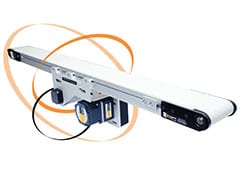
AS40-CD Conveyors meet the needs of applications where there is not much space to either side of the conveyor and both ends must be clear. The Center Drive sits under the conveyor and is movable by loosening and tightening a few screws. AS40-CD conveyors are available in lengths up to 26’ and feature tee slots on the frame. Nosebar tails are available at both ends of the conveyor for applications that require the transfer of small parts.
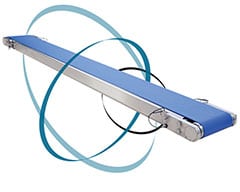
HC200 Conveyors feature stainless steel construction with optional sealed edge belts. It is easily cleaned and sanitized due to its unique pull-pin design which allows the conveyor to be disassembled and cleaned without moving the conveyor, making it ideal for robotic operations involving food, beverage and pharmaceutical applications.
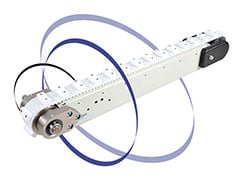
IS300 Conveyors, or indexing conveyors, are ideal for applications where parts must be placed precisely for a robotic operation. Timing belt construction allows this conveyor to stop and start with accuracy up to +/-0.015”. Custom cleats are removable to meet changing requirements.
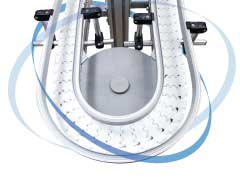
Point-to-point systems easily integrate into robotics systems. Curves can be used to bring product around the line and the built-in t-slot makes it easy to fasten accessories directly to the frame.
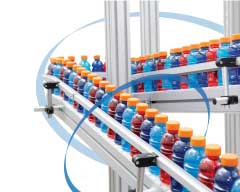
Alpine systems utilize vertical space to provide a buffer in case of jams and breakdowns upstream, or for curing and drying.